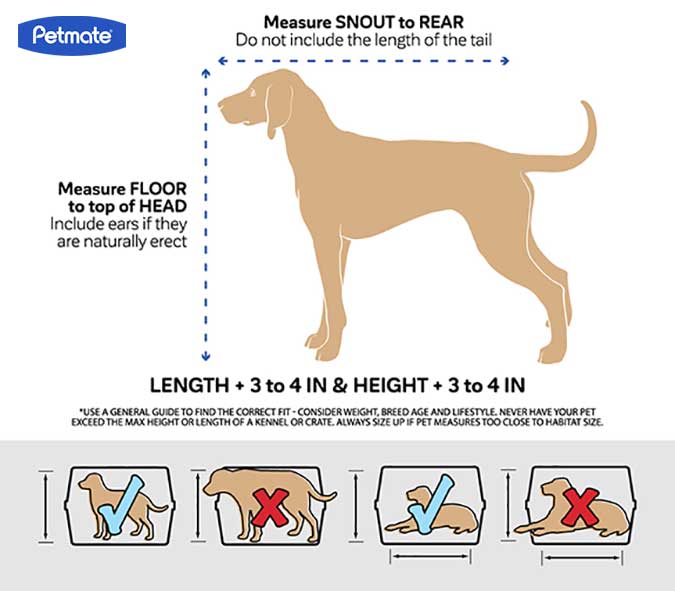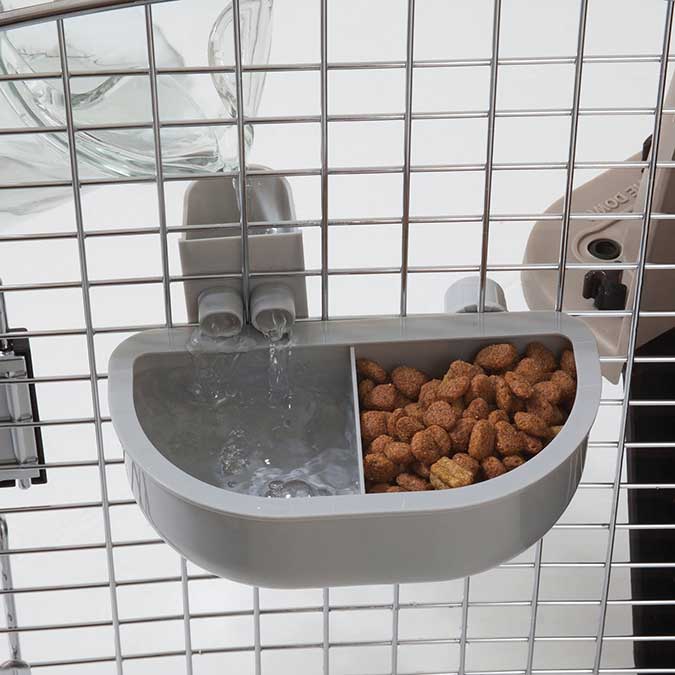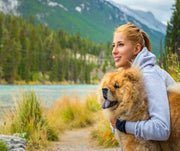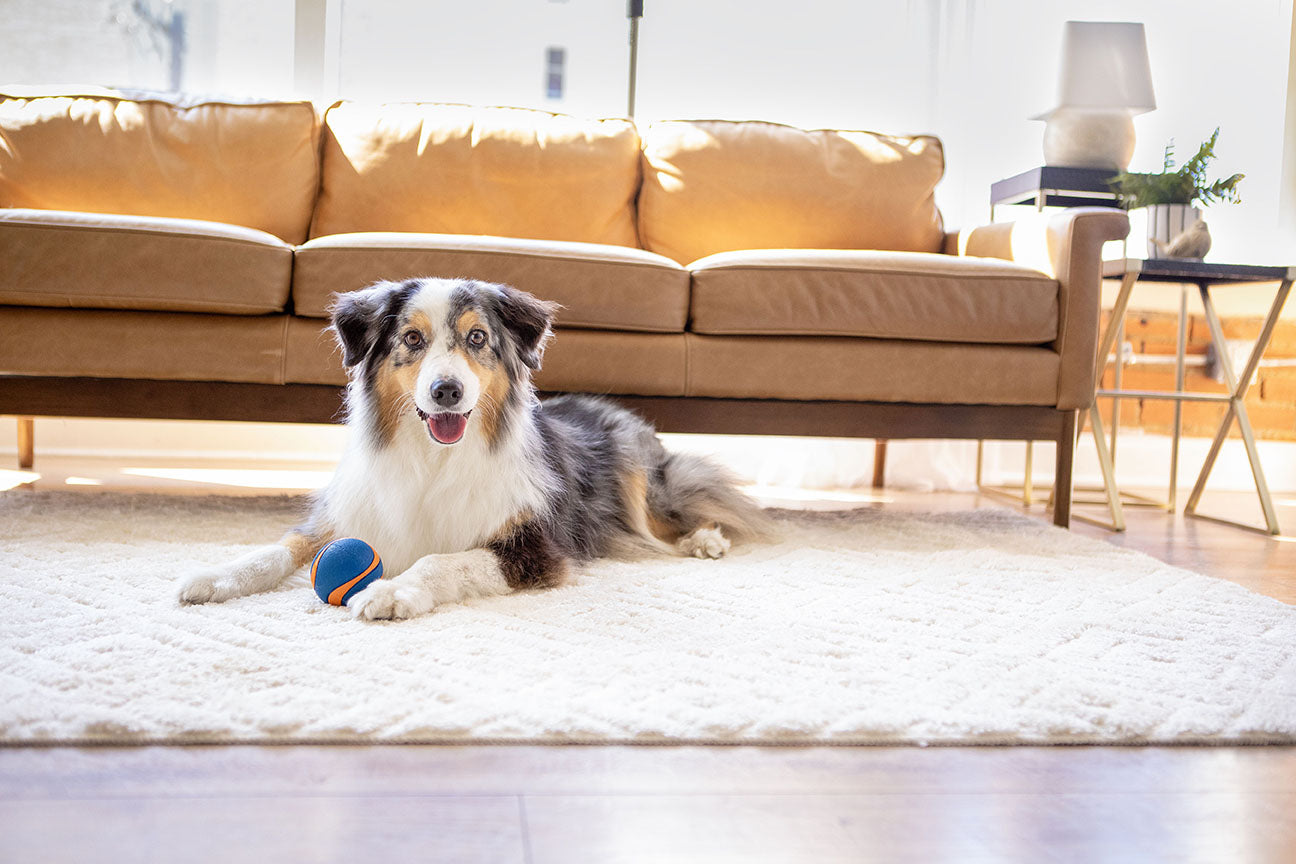Quick Air Travel Guide: Traveling With Pets

Does the idea of your dog experiencing airline cargo travel make you nervous? This Quick Guide from Petmate is here to help owners and their pets have a positive experience when traveling as checked pets or being shipped as cargo. Before stocking up on dog travel gear, it's important to familiarize yourself with what is and isn't allowed for airline travel.
This guide is not applicable for pets flying in the cabin with their owner, nor is it applicable to international pet travel. This guide is intended for those with larger dogs who will not fit in a carrier below the seat in front of you. If you are flying with a cat or smaller dog (generally 20 pounds or less), we recommend bringing them into the cabin with you in an approved carrier.
Preparing Both You and Your Pet for Air Travel
There are regulatory mandates for pets traveling on a plane, both from USDA and the International Air Transportation Association (IATA). In addition to these regulations, each airline also has their own internal pet travel requirements, over and above what the USDA and IATA mandate. Each Airline’s Pet Travel Requirements differ so it is important to do your homework IN ADVANCE of traveling!
Please note that this Quick Air Travel Guide does not replace advice or direction from your Airline
1. Contact Your Specific Airline Directly Before Anything Else
Beyond the mandated USDA and IATA Regulations, each Airline has its own unique Pet Travel Requirements based on aircraft sizes, internal policies, and procedures. Knowing the details of your Airlines Pet Travel Requirements is critical for a smooth travel experience for you and your pet.
It's incredibly important to note that not all airlines will allow dogs to fly cargo due to liability concerns. Some of these major airlines include Southwest, JetBlue, and Frontier. Rules and regulations may change from time to time, so be sure to check in with an airline even if your dog has flown cargo with them before.
Additionally, some airlines have breed restrictions on Brachycephalic, or short-nosed dogs, such as Pugs and Boston Terriers. The unique anatomy of these short-nosed dogs makes them more vulnerable to changes in air quality and temperature.
Once you've confirmed that your airline will allow your dog to travel as a checked pet, keep in mind:
- Each plane’s cargo hold is different and may not accept the size of kennel your pet needs.
- Only the airline can confirm that your pet will be accepted on a particular flight.
- Do not show up at the airport without a reservation for your pet to travel.
- There is no such thing as an “airline approved” crate regardless of claims on packaging. However, most if not all airlines require plastic kennels.
2. USA Domestic Travel Plastic Kennel Requirements
Please contact your airline for their carrier sizing requirements. Below is a general guideline, but your airline may have different specifications on the size of crate required for your size pet. Click here for more information on how to choose a kennel.
- Snub-nosed dogs should have a crate one size larger than normal to increase airflow around the pet.
- US domestic travel requires ventilation on the top half of the kennel and on both the left and right sides.
- Wheels on kennels are prohibited. Wheels must be removed or rendered inoperable prior to travel.
3. No Part of Your Pet Should Touch the Top of the Crate

The height of the interior of the crate must be 3-4” taller than the pet, including the head and ears. Your dog should not have to crouch down when inside the kennel and should have just enough room and stand and sit.
4. Your Dog Should be Able to Lay Down with Legs Extended
The length of the crate must be equal to the length of the pet plus the length of the front legs. This means that your dog should have just enough room to walk inside the kennel, turn around, and lay down comfortably. If your dog has extra room, they may end up using the restroom in the extra space.
5. Food & Water Requirements
- 2 food/water dishes (or one double dish) are required so your pet has access to fresh water and food in-flight as well as during layovers.
- Dishes should be attached to the front door so food and water can be provided without opening the door in the event of a delay or emergency.
- Loose bowls are prohibited inside the kennel.
- The bowls must be attached low enough for your pet to reach into it to access food and water. Check out our collection of dog travel bowls and feeders that attach directly to your pet's kennel.

6. Kennel Door Requirements
- Doors on kennels must be metal (no plastic or mesh).
- Kennels with doors on the top are not acceptable.
7. Inside the Kennel
The kennel bottom must be lined with absorbent materials like:
- Kennel pads
- Potty pads
- Towels
- Small blanket
- Cotton T-shirt
Overly fluffy blankets are not allowed inside the kennel but that doesn't mean you can't bring your dog's favorite blanket inside your checked baggage. Just be sure to check with the airline before travel to be sure it's allowed.
Items prohibited inside or on kennels during travel:
- Toys
- Wood/hay/straw bedding
- Overly fluffy blankets or comforters
- Lofty, fluffy pillows or pillow beds
8. Make Sure You Have the Required Veterinary Documentation
- Double-check with your airline for exact health certificate requirements as they may vary.
- Ensure your dog is up to date on all vaccinations and be sure to bring a copy of your dog's immunization record.
9. Include Required Labeling on the Kennel
Most airlines provide the necessary labels needed for transport. Contact your airline prior to travel to confirm exactly what markings are needed and what labels you may have to provide or make yourself. We carry standardized live animal documentation and other necessary dog travel accessories, but it's important to check directly with the airline to make sure your labels are compliant.
Some examples of labeling that may be required by the airline include:
- FOOD/WATER INSTRUCTIONS – Place, unobstructed, on the top of the kennel.
- DIRECTIONAL ARROWS (UP) – 1 set of arrows on opposing sides of the kennel.
- “LIVE ANIMAL” STICKERS – 1 must be placed on the top of the crate and 1 on any side of the kennel.
-
IATA LABEL (species) – Circle the applicable animal type and note the contents.
- (i.e. 1 DOG “FIDO”). Place, unobstructed, on the top of the kennel
10. Tips Before Traveling With Your Pet
- Visit the American Veterinary Medical Association website for the most in-depth advice on traveling with pets in cargo or as checked.
- Do not sedate your pet for air travel. This applies to dogs in puppy or senior stages.
- Allow your dog to potty before going to the kennel one final time at the airport
- Remove collar and leash before putting them in the kennel. Place both in a clear plastic bag affixed to the top for use upon arrival at the destination
- Ensure there are no choking, tangle, or poking hazards in the kennel. Feel all the edges of dishes, inside the crate, bedding, etc. to ensure they are safe and hazard-free
- Allow your dog to become acclimated to the kennel at least 2 weeks before travel is planned to increase their comfort level in the kennel, especially if they are not already crate trained. This helps to reduce stress during the travel period as your dog will already be familiar with his kennel surroundings.
To learn more about plastic kennels for travel please visit Petmate plastic kennels.
Previous article

Next article

Related posts
View all-

National Dog Week: 7 Fun Ways to Celebrate with Your Pup
The last full week of September marks National Dog Week: a tradition going strong since 1928. Founded by Captain William Lewis Judy, this celebration was created to promote responsible dog ownership, reduce the number of stray dogs, and honor the incredible role dogs play in our lives.
Read Article -

How to Prep Your Pet for Fall: Grooming and Wellness Tips
As the days grow shorter and the crisp air settles in, our routines naturally shift; long walks become brisk outings, and cozy nights become the norm. Like us, pets feel these changes. Helping them ease into the new season ensures they stay happy, comfortable, and healthy.
Read Article -

Vet-Approved Benefits of Fetch: How Play Supports Your Dog’s Health & Happiness
Whether it’s a spontaneous backyard sprint or a structured game of fetch, movement is one of the most powerful ways to nurture the bond between pets and their people.
Read Article



